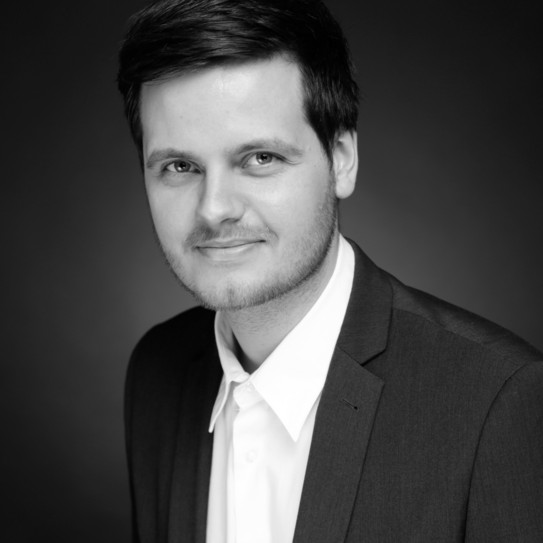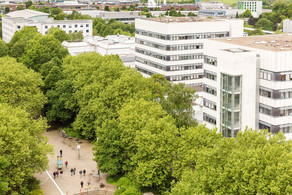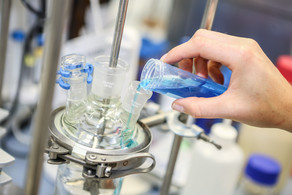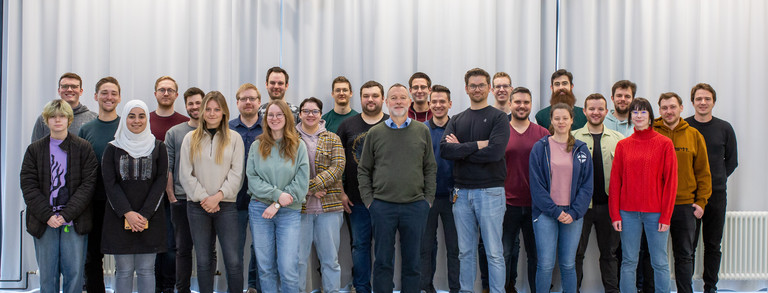M. Sc. Marc Peters
M.Sc Marc Peters
Contact through the Secretariat:
monika.boschtu-dortmundde

Curriculum Vitae
Marc Peters studied process engineering at the Hochschule Niederrhein (2009-2013). In addition, he completed his vocational training to qualify as a draftsman (2011) and gained first experiences at Babcock Borsig Steinmüller GmbH in Oberhausen in the department of heat technology and process engineering. Following this, he started studying chemical engineering at the TU Dortmund and earned a master’s degree with his thesis on the application of a phase contacting jet loop reactor for the biphasic aqueous hydroformylation. Since 2018 he is working as a research associate at the laboratory of industrial chemistry.
Publications & Conferences
- Vogt, D.; Dreimann, J.; and Peters, M. Reaktoren für spezielle technisch-chemische Prozesse: Membranreaktoren. In Handbuch chemische Reaktoren; Reschetilowski, W., Ed.; 2019; pp. 1–27.
- Peters, M. , Vogelsang, D. , Seidensticker, T. , Vogt, D. , and Dreimann, J. M. (2018). "Prozessintensivierung via organophiler Nanofiltration - Entwicklungen in der Rückgewinnung homogener Übergangsmetallkatalysatoren". Chem. Ing. Tech. 90, 1177–1177, DOI: 10.1002/cite.201855101.
- Warmeling, H. , Janz, D. , Peters, M. , and Vorholt, A. J. (2017). "Acceleration of lean aqueous hydroformylation in an innovative jet loop reactor concept". Chem. Eng. J. 330, 585–595, DOI: 10.1016/j.cej.2017.07.152.
- March 2021, Weimar, Germany: 54. Jahrestreffen Deutscher Katalytiker, "Forever Young - Membrane Enhanced Catalyst Lifetime"
- February 2021, Frankfurt am Main, Germany: Jahrestreffen der ProcessNet-Fachgruppen Extraktion und Membrantechnik, "Long Live the Catalyst - Membrane Enhanced Activity"
- February 2020, Essen, Germany: DGMT Membrane Symposium, “Enhancing Metathesis Reaction Performance via Organic Solvent Nanofiltration” (Best Poster Award)
- February 2020, Freising, Germany: Jahrestreffen der ProcessNet-Fachgruppen Hochdruckverfahrenstechnik und Membrantechnik, “Enhancing Metathesis Reaction Performance via Organic Solvent Nanofiltration” (Best Poster Award)
- March 2019, Potsdam, Germany: Jahrestreffen der ProcessNet-Fachgruppen Fluidverfahrenstechnik und Membrantechnik, “Recovery of Homogeneous Catalysts - How to Test Suitable Membranes for Organic Solvent Nanofiltration?”
- September 2019, Dresden, Germany: DGMK Conference: Circular Economy – A Fresh View on Petrochemistry, “Enhancing Metathesis Reaction Performance via Organic Solvent Nanofiltration”
- October 2019, Enschede, Netherlands: 7th International Conference on Organic Solvent Nanofiltration, “Enhancing Transfer Hydrogenation Performance via Organic Solvent Nanofiltration”
- September 2018, Aachen, Germany: ProcessNet-Jahrestagung und 33. DECHEMA-Jahrestagung der Biotechnologen, “Process Intensification via Organic Solvent Nanofiltration - Recent Developments in Homogeneous Catalyst Recovery”





